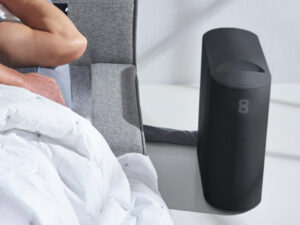The outbreak is amping up demand for drones, robots, telemedicine, virtual reality, and other aspects of technology, according to eMarketer.
It’s ironic that advancements in technology, science, and similar fields are often driven by war, famine, disease, and other ills that plague mankind. And the current coronavirus is no exception. Just as tragically as the outbreak is causing death and devastation across the globe, so too is it leading to advances in many areas, specifically in technology. In an article published last week by eMarketer, Victoria Petrock, the firm’s principal analyst for emerging technology, looks at several innovations in tech that are getting a shot in the arm due to COVID-19.
Delivery Drones
As people are forced to quarantine, trips to the local supermarket, department store, and restaurant have been put on hold in favor of at-home service. As such, there’s been a surge in the use of drones that can deliver goods to your doorstep. In China, JD.com, Pudu Technology, and other companies are using drones to carry medical supplies within hospitals and bring food and medicine to people at home. In the US, Amazon, UPS, and others are testing drones to deliver retail products, medicine, and fast food to homes.
The advantage of drones is that they can handle a large amount of work without catching or spreading COVID-19. So far, safety concerns and regulations have restricted the widespread use of drones. But as the coronavirus continues, those regulations may be mitigated by the need to service more people at home.
SEE: Augmented reality for business: Cheat sheet (free PDF) (TechRepublic)
Worker Robots
Robots are being used more to help protect people during the coronavirus, says Petrock. In China, robots are checking temperatures, carrying medical samples, dispensing hand sanitizer, and spraying disinfectant. At Providence Regional Medical Center in Everett, WA, a robot was used to treat a COVID-19 patent by employing its camera, microphone, and stethoscope to monitor his vital signs. Robots are also being used in the food industry to deliver meals to hospital patients and even to cook burgers and make coffee at certain restaurants, all to keep such services more sanitary.
Telemedicine
With people unable to visit their doctors during the quarantine, telemedicine has taken off. The US government recently expanded telemedicine consultations to almost 62 million Medicare beneficiaries so they can more easily speak with doctors, get treatments, and order prescriptions by phone or video call. Petrock cited an October 2019 survey by Stanford Medicine that found 39% of US doctors use telemedicine. But with the coronavirus outbreak, that percentage is likely to increase.
Another area of growth is asynchronous healthcare, which helps people manage certain conditions without having to visit their doctor. As one example, a health and wellness management service called One Drop lets diabetics measure their glucose levels, get forecasts of low blood sugar eight hours away, and receive online advice from medical experts.
Biometrics
Biometrics is a dicey area. Using your face or fingerprint to verify your identity on your computer or mobile device is a welcome step toward a password-less society. But when organizations and governments use biometrics to scan and monitor people, such an invasive technology is seen in a different light. With the coronavirus outbreak, China has been using sensors and facial recognition to scan passengers at Beijing’s Qinghe Railway Station to find people with high body temperatures. Russia also is reportedly using facial recognition cameras to enforce its COVID-19 quarantine. Such measures may be useful and even necessary during a major outbreak, but they naturally raise privacy concerns.
5G
Wireless carriers have been pushing to roll out 5G networks, but the newest flavor of cellular connectivity still has a long road ahead before it becomes ubiquitous. However, as more people are forced to work remotely due to the virus, there’s a far greater need for higher network speeds and better performance, which should spur the growth of 5G.
“Due to the sudden uptick in existing network access to support remote work, we will witness an acceleration in the development of 5G to ensure the bandwidth and capacity challenges of existing infrastructure can be addressed,” according to Ian Runyon, vice president of product and mobile at enterprise expense management company Tangoe.
Virtual Reality
Virtual reality hasn’t yet quite taken off the way its promoters had likely hoped. But that’s probably going to change due to the coronavirus. People are staying at home instead of going out to theme parks, travel destinations, and similar spots. And those people need ways to amuse and entertain themselves. Enter virtual reality where you can play games, explore different parts of the world, and socially interact with other people both virtual and real. Companies are also testing VR as a way to train employees, conduct meetings, and work on projects together. In one example cited by Petrock, scientists around the world are using a VR platform called Nanome to collaborate on coronavirus research and treatments.
Smart Home Devices
As the coronavirus can live on inanimate objects, many people have become more nervous about handling their mobile devices, remote controls, and other gadgets. Talking to your smart devices is one way to avoid the possibility of spreading germs at home. As more TVs, components, appliances, and other items come with built-in voice control, they may catch on with consumers who want a touch-free experience.
Also see

Getty Images/iStockphoto
Source of Article




